HP EliteBook 850 G8 review – premium business machine for niche consumers
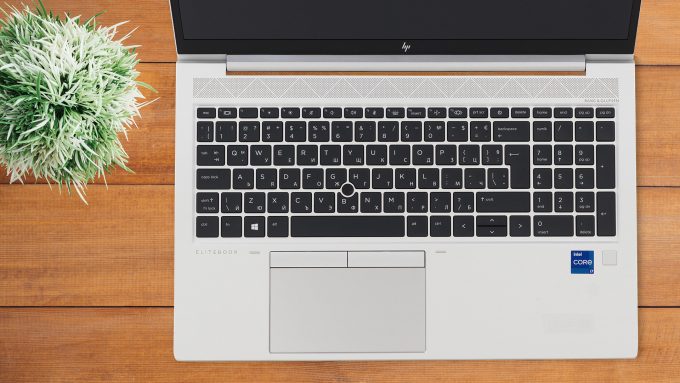 HP is really fond of their EliteBook brand. After all, premium business clients can draw a ton of return, as they not only need the hardware, but also all of the security features, and even cloud services. This is why there should be no compromises with the EliteBook 850 G8.
HP is really fond of their EliteBook brand. After all, premium business clients can draw a ton of return, as they not only need the hardware, but also all of the security features, and even cloud services. This is why there should be no compromises with the EliteBook 850 G8.
In terms of hardware, you get the best Intel has to offer in the ULV space. Yes, we are talking about the Tiger Lake U processors, and the device can be maxed out with the Core i7-1185G7, which also supports vPro.
This is not all, though, as you get an optional GeForce MX450 for that extra graphics performance. Also, some units (like ours) feature a 4K IPS panel.
Now, HP has taken privacy and ease of use to the next level. You get an HD camera with an IR face recognition system and a privacy shutter. Then, you have the HP Patch Assistant, which is part of the HP Manageability Integration Kit. Ultimately, this simplifies the observation and maintenance of your whole fleet of notebooks.
You can check the prices and configurations in our Specs System: https://laptopmedia.com/series/hp-elitebook-850-g8/
Contents
Specs Sheet
- HDD/SSD
- up to 8000GB SSD
- M.2 Slot
- 1x M.2 NVMe slot See photo
- RAM
- up to 64GB
- OS
- Windows 11 Pro, Windows 10 Pro, No OS
- Battery
- 56Wh, 3-cell
- Body material
- Aluminum
- Dimensions
- 359 x 233.8 x 19.2 mm (14.13" x 9.20" x 0.76")
- Weight
- 1.69 kg (3.7 lbs)
- Ports and connectivity
- 1x USB Type-A
- 3.2 Gen 1 (5 Gbps)
- 1x USB Type-A
- 3.2 Gen 1 (5 Gbps), Power Delivery (PD)
- 2x USB Type-C
- 3.2 Gen 2 (10 Gbps), Thunderbolt 4, DisplayPort
- HDMI
- 2.0
- Wi-Fi
- 802.11ax
- Bluetooth
- 5.0
- Audio jack
- 3.5mm Combo Jack
- Features
- Fingerprint reader
- optional
- Web camera
- HD
- Backlit keyboard
- optional
- Microphone
- 3x Multi-Array Microphone
- Speakers
- 2 Speakers, Bang & Olufsen
- Optical drive
All HP EliteBook 850 G8 configurations
What’s in the box?
Inside the package, you will find some paper manuals, a 65W USB Type-C power brick, and the laptop, itself.
Design and construction
For starters, let’s focus on the outside of the notebook. It’s good to see that HP hasn’t cheaped out on materials, as the laptop is made out of aluminum and magnesium. Both its lid and base feel sturdy. Also, it’s pretty lightweight at 1.68 kg. Its profile, respectively, sits at 19.2mm.
Another thing that shows this device’s premium quality is the smoothness of the hinges. This ensures that the lid can be opened with a single hand. Here, the matte display is surrounded by slim bezels. Nevertheless, the top one features an HD Web camera. It has a privacy shutter, which is not really comfortable to slide. What is more impressive is the IR face recognition sensor.
Moving to the base, we see another sturdy cover. Well, there is some deck flex, but it is nothing to worry about. The keyboard, itself, is spill-resistant and has a backlight. Also, it is pretty comfortable for typing, thanks to its decent key travel and tactile feedback.
Additionally, you can make use of a NumberPad and a trackpoint (or a Black Nipple). If you look a bit downwards, you will notice that the touchpad has two buttons placed above it. They are meant for work with the aforementioned trackpoint.
By the way, HP has done a really good job with the touchpad here. It keeps the same large footprint from the last year’s model. Moreover, it is supplied with a glass cover, which offers exceptionally smooth gliding, while the tracking accuracy is on point. Before we take a look at the bottom panel, let’s just mention that the Bang & Olufsen speakers of this notebook are placed above the keyboard, while the fingerprint reader is located below it.
A sneak peek at the bottom plate reveals only a ventilation grill. This is where the fan draws its cool air from. Respectively, the hot air is exhausted from the back (in between the lid and the base).
Ports
The port situation here is as follows – there is a USB Type-A 3.2 (Gen. 1) port, an audio jack, and an optional Smart Card reader on the left. Then, the right side houses a power plug, another USB Type-A 3.2 (Gen. 1) port, an HDMI 2.0b connector, two Thunderbolt 4 connectors, and an optional SIM card reader.
Disassembly, upgrade options and maintenance
Getting inside of this notebook is pretty easy. Just undo all 5 Phillips-head screws and pry the bottom panel away from the chassis.
Before you continue, unplug the 56Wh battery pack from the motherboard.
Here, the memory can be upgraded via two SODIMM slots for a total of 64GB in dual-channel mode. To access them, you need to remove the metal bracket. Storage-wise, you get only one M.2 PCIe x4 slot.
In terms of cooling, you get two heat pipes, as well as a reasonably sized fan.
Display quality
HP EliteBook 850 G8 has a panel with a model number AUO AUO9890. Its diagonal is 15.6″ (39.62 cm), and the resolution – 3840 x 2160 pixels. The screen ratio is 16:9, and we are looking at a pixel density of – 282 ppi, and a pitch of 0.09 x 0.09 mm. The screen turns into Retina when viewed at distance equal to or greater than 30cm (12″) (from this distance one’s eye stops differentiating the separate pixels, and it is normal for looking at a laptop).
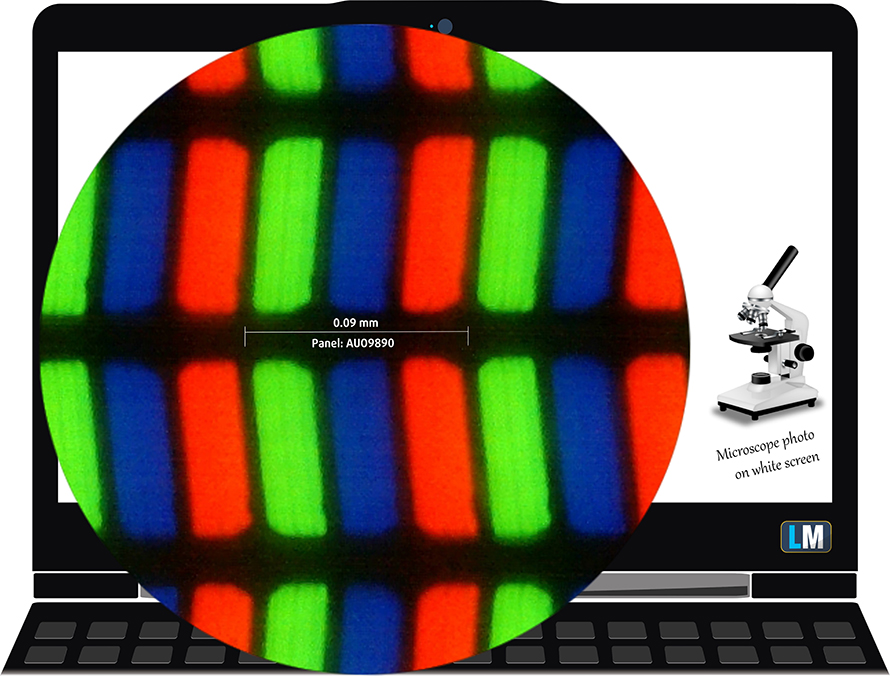
Viewing angles are excellent. We offer images at 45° to evaluate image quality.

We measured a maximum brightness of 423 nits in the middle of the screen and 389 nits as an average for the whole area, with a maximum deviation of 12%. The Correlated Color Temperature on a white screen is 6000K – warmer than the optimal for the sRGB standard of 6500K.
In the illustration below you can see how the display performs from a uniformity perspective. In other words, the leakage of light from the light source.
Values of dE2000 over 4.0 should not occur, and this parameter is one of the first you should check if you intend to use the laptop for color-sensitive work. The contrast ratio is very good – 1700:1.
To make sure we are on the same page, we would like to give you a little introduction to the sRGB color gamut and the Adobe RGB. To start, there’s the CIE 1976 Uniform Chromaticity Diagram that represents the visible specter of colors by the human eye, giving you a better perception of the color gamut coverage and the color accuracy.
Inside the black triangle, you will see the standard color gamut (sRGB) that is being used by millions of people on HDTV and on the web. As for the Adobe RGB, this is used in professional cameras, monitors, etc for printing. Basically, colors inside the black triangle are used by everyone and this is the essential part of the color quality and color accuracy of a mainstream notebook.
Still, we’ve included other color spaces like the famous DCI-P3 standard used by movie studios, as well as the digital UHD Rec.2020 standard. Rec.2020, however, is still a thing of the future and it’s difficult for today’s displays to cover that well. We’ve also included the so-called Michael Pointer gamut, or Pointer’s gamut, which represents the colors that naturally occur around us every day.
The yellow dotted line shows HP EliteBook 850 G8’s color gamut coverage.
Its display covers 93% of the sRGB/ITU-R BT.709 (web/HDTV standard) in CIE1976.
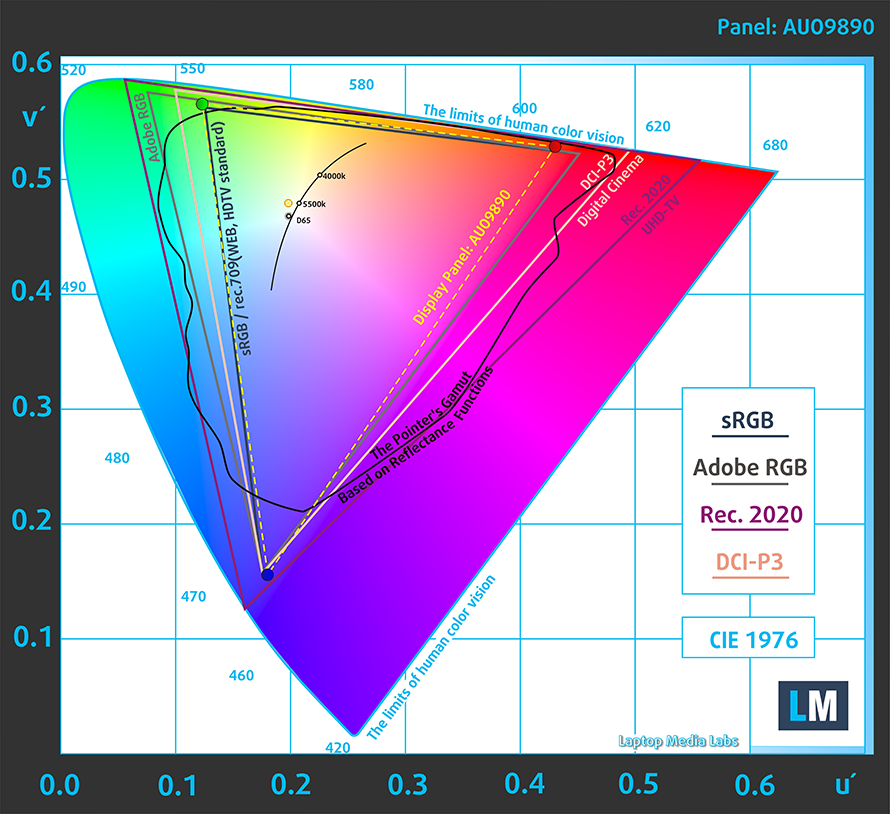
Our “Design and Gaming” profile delivers optimal color temperature (6500K) at 140 cd/m2 luminance and sRGB gamma mode.
We tested the accuracy of the display with 24 commonly used colors like light and dark human skin, blue sky, green grass, orange, etc. You can check out the results at factory condition and also, with the “Design and Gaming” profile.
Below you can compare the scores of HP EliteBook 850 G8 with the default settings (left), and with the “Gaming and Web design” profile (right).
The next figure shows how well the display is able to reproduce really dark parts of an image, which is essential when watching movies or playing games in low ambient light.
The left side of the image represents the display with stock settings, while the right one is with the “Gaming and Web Design” profile activated. On the horizontal axis, you will find the grayscale, and on the vertical axis – the luminance of the display. On the two graphs below you can easily check for yourself how your display handles the darkest nuances but keep in mind that this also depends on the settings of your current display, the calibration, the viewing angle, and the surrounding light conditions.
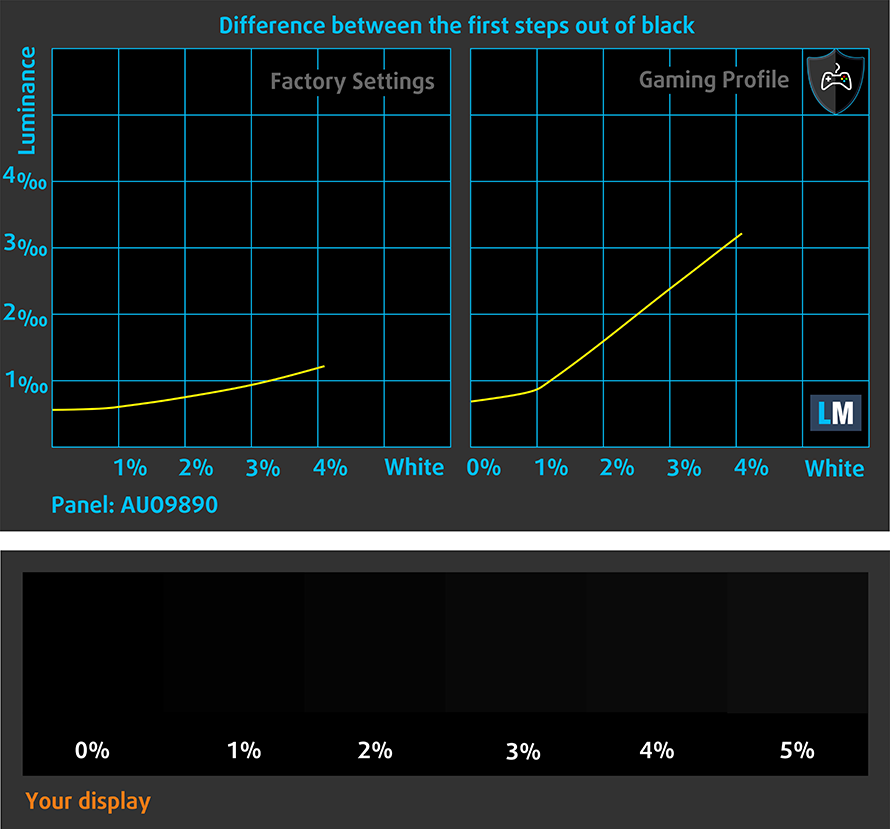
Response time (Gaming capabilities)
We test the reaction time of the pixels with the usual “black-to-white” and “white-to-black” method from 10% to 90% and vice versa.
We recorded Fall Time + Rise Time = 26 ms.
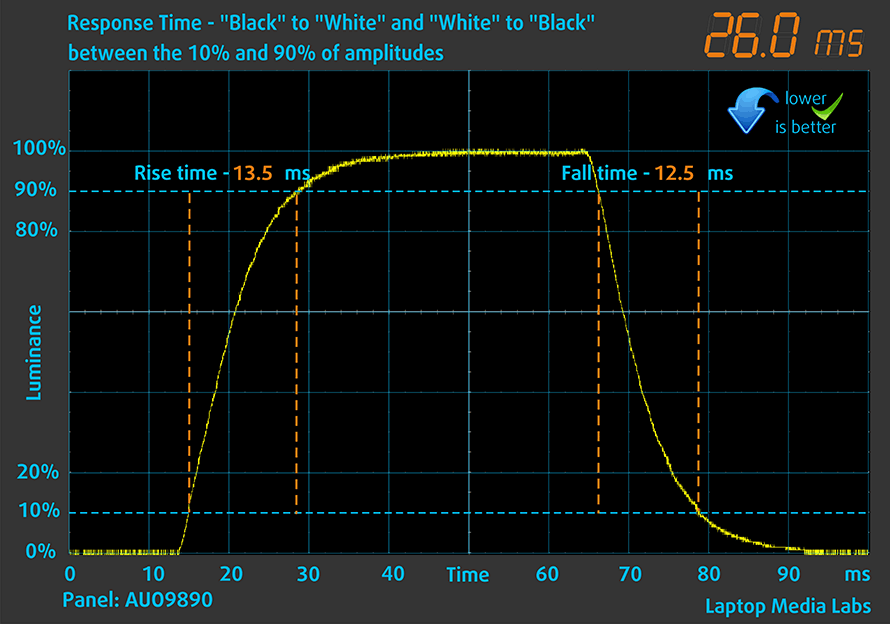
After that, we test the reaction time of the pixels with the usual “Gray-to-Gray” method from 50% White to 80% White and vice versa between 10% and 90% of the amplitude.

PWM (Screen flickering)
Pulse-width modulation (PWM) is an easy way to control monitor brightness. When you lower the brightness, the light intensity of the backlight is not lowered, but instead turned off and on by the electronics with a frequency indistinguishable to the human eye. In these light impulses, the light/no-light time ratio varies, while brightness remains unchanged, which is harmful to your eyes. You can read more about that in our dedicated article on PWM.
HP EliteBook 850 G8 doesn’t use PWM in the adjustment of its brightness. This makes the screen comfortable for extended periods of use, without presenting excessive harm to your eyesight in this aspect.
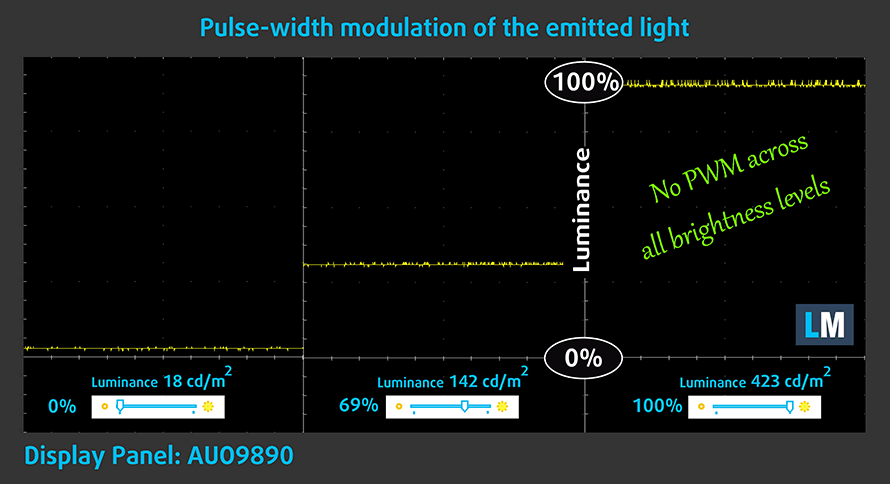
Blue light emissions
Installing our Health-Guard profile not only eliminates PWM but also reduces the harmful Blue Light emissions while keeping the colors of the screen perceptually accurate. If you’re not familiar with the Blue light, the TL;DR version is – emissions that negatively affect your eyes, skin, and your whole body. You can find more information about that in our dedicated article on Blue Light.
Buy our profiles
Since our profiles are tailored for each individual display model, this article and its respective profile package are meant for HP EliteBook 850 G8 configurations with 15.6″ UHD IPS AUO AUO9890.
*Should you have problems with downloading the purchased file, try using a different browser to open the link you’ll receive via e-mail. If the download target is a .php file instead of an archive, change the file extension to .zip or contact us at [email protected].
Read more about the profiles HERE.
In addition to receiving efficient and health-friendly profiles, by buying LaptopMedia's products you also support the development of our labs, where we test devices in order to produce the most objective reviews possible.

Office Work
Office Work should be used mostly by users who spend most of the time looking at pieces of text, tables or just surfing. This profile aims to deliver better distinctness and clarity by keeping a flat gamma curve (2.20), native color temperature and perceptually accurate colors.

Design and Gaming
This profile is aimed at designers who work with colors professionally, and for games and movies as well. Design and Gaming takes display panels to their limits, making them as accurate as possible in the sRGB IEC61966-2-1 standard for Web and HDTV, at white point D65.

Health-Guard
Health-Guard eliminates the harmful Pulse-Width Modulation (PWM) and reduces the negative Blue Light which affects our eyes and body. Since it’s custom tailored for every panel, it manages to keep the colors perceptually accurate. Health-Guard simulates paper so the pressure on the eyes is greatly reduced.
Get all 3 profiles with 33% discount
Sound
HP EliteBook 850 G8’s speakers produce a sound of pretty good quality. Its low, mid, and high tones are clear of deviations.
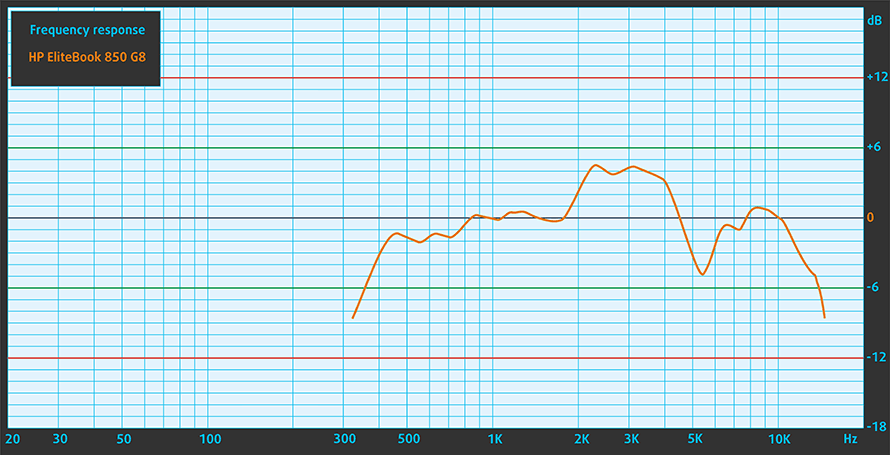
Drivers
All of the drivers and utilities for this notebook can be found here: https://support.hp.com/au-en/drivers/selfservice/hp-elitebook-850-g8-notebook-pc/38226197
Battery
Now, we conduct the battery tests with Windows Better performance setting turned on, screen brightness adjusted to 120 nits, and all other programs turned off except for the one we are testing the notebook with. This device’s 56Wh battery pack lasts for 10 hours and 31 minutes of Web browsing, and 8 hours and 48 minutes of video playback.
In order to simulate real-life conditions, we used our own script for automatic web browsing through over 70 websites.
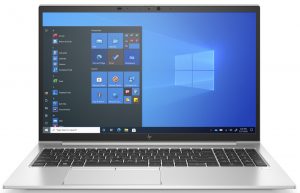
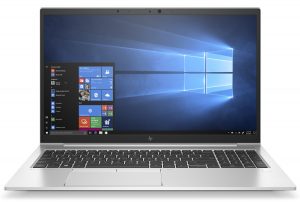
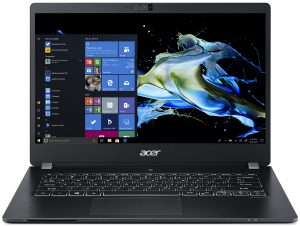
For every test like this, we use the same video in HD.



CPU options
This device can be found with Core i5-1135G7, Core i5-1145G7, Core i7-1165G7, and Core i7-1185G7.
Results are from the Cinebench 20 CPU test (the higher the score, the better)
Results are from our Photoshop benchmark test (the lower the score, the better)
HP EliteBook 850 G8 CPU variants
Here you can see an approximate comparison between the CPUs that can be found in the HP EliteBook 850 G8 models on the market. This way you can decide for yourself which HP EliteBook 850 G8 model is the best bang for your buck.
Note: The chart shows the cheapest different CPU configurations so you should check what the other specifications of these laptops are by clicking on the laptop’s name / CPU.
Results are from the Cinebench R23 CPU test (the higher the score, the better)
Results are from our Photoshop benchmark test (the lower the score, the better)
GPU options
In addition to the integrated Iris Xe Graphics G7 with 80 and 96EUs, the notebook is offered with a dedicated GeForce MX450 graphics card.
Results are from the 3DMark: Time Spy (Graphics) benchmark (higher the score, the better)
Results are from the 3DMark: Fire Strike (Graphics) benchmark (higher the score, the better)
Results are from the Unigine Superposition benchmark (higher the score, the better)
HP EliteBook 850 G8 GPU variants
Here you can see an approximate comparison between the GPUs that can be found in the HP EliteBook 850 G8 models on the market. This way you can decide for yourself which HP EliteBook 850 G8 model is the best bang for your buck.
Note: The chart shows the cheapest different GPU configurations so you should check what the other specifications of these laptops are by clicking on the laptop’s name / GPU.
Results are from the 3DMark: Time Spy (Graphics) benchmark (higher the score, the better)
Results are from the 3DMark: Fire Strike (Graphics) benchmark (higher the score, the better)
Results are from the 3DMark: Wild Life (Graphics) benchmark (higher the score, the better)
Results are from the Unigine Superposition benchmark (higher the score, the better)
Gaming tests

| CS:GO | HD 1080p, Low (Check settings) | HD 1080p, Medium (Check settings) | HD 1080p, MAX (Check settings) |
|---|---|---|---|
| Average FPS | 220 fps | 162 fps | 93 fps |
Temperatures and comfort
Max CPU load
In this test we use 100% on the CPU cores, monitoring their frequencies and chip temperature. The first column shows a computer’s reaction to a short load (2-10 seconds), the second column simulates a serious task (between 15 and 30 seconds), and the third column is a good indicator of how good the laptop is for long loads such as video rendering.
Average core frequency (base frequency + X); CPU temp.
| Intel Core i7-1165G7 (15W TDP) | 0:02 – 0:10 sec | 0:15 – 0:30 sec | 10:00 – 15:00 min |
|---|---|---|---|
| HP EliteBook 850 G8 | 2.71 GHz @ 54°C @ 30W | 1.98 GHz @ 56°C @ 15W | 2.06 GHz @ 52°C @ 15W |
| ASUS VivoBook S14 S435 | 3.06 GHz (B+9%) @ 83°C @ 35W | 2.80 GHz @ 91°C @ 30W | 2.10 GHz @ 91°C @ 21W |
| Dell Latitude 14 5420 | 3.80 GHz (B+36%) @ 98°C @ 51W | 3.27 GHz (B+17%) @ 98°C @ 35W | 2.78 GHz @ 96°C @ 26W |
| HP EliteBook x360 1030 G8 | 3.08 GHz (B+10%) @ 98°C @ 31W | 2.77 GHz @ 98°C @ 26W | 2.35 GHz @ 85°C @ 19W |
| HP EliteBook x360 1040 G8 | 3.43 GHz (B+23%) @ 98°C @ 40W | 2.84 GHz (B+1%) @ 88°C @ 27W | 2.43 GHz @ 69°C @ 17W |
| HP Elite Dragonfly G2 | 3.17 GHz (B+13%) @ 98°C @ 34W | 2.34 GHz @ 76°C @ 18W | 2.14 GHz @ 73°C @ 16W |
| Lenovo Yoga Slim 7i Pro (14) | 3.90 GHz (B+39%) @ 85°C @ 61W | 2.57 GHz @ 69°C @ 26W | 2.37 GHz @ 57°C @ 20W |
| HP Pavilion 14 (14-dv0000) | 3.08 GHz (B+10%) @ 91°C @ 40W | 2.79 GHz @ 89°C @ 29W | 2.13 GHz @ 71°C @ 18W |
| Acer TravelMate P4 (TMP414-51) | 2.99 GHz (B+7%) @ 94°C @ 33W | 2.66 GHz @ 93°C @ 27W | 1.86 GHz @ 68°C @ 16W |
| Dell Inspiron 13 7306 2-in-1 | 3.12 GHz (B+11%) @ 99°C @ 33W | 2.68 GHz @ 99°C @ 25W | 2.04 GHz @ 83°C @ 16W |
| ASUS ZenBook Flip S UX371 | 3.48 GHz (B+24%) @ 90°C @ 43W | 2.79 GHz @ 90°C @ 27W | 1.95 GHz @ 69°C @ 14W |
| Acer Swift 3X (SF314-510G) | 3.74 GHz (B+34%) @ 95°C @ 45W | 3.45 GHz (B+23%) @ 95°C @ 37W | 3.09 GHz (B+10%) @ 85°C @ 28W |
| Acer Swift 3 (SF313-53) | 3.55 GHz (B+27%) @ 95°C @ 44W | 3.17 GHz (B+13%) @ 95°C @ 34W | 2.32 GHz @ 64°C @ 17W |
As you can tell, HP was once again lenient with its thermal management. Ultimately, the end result is low temperatures, which can’t be bad, right?
Real-life gaming
| NVIDIA GeForce MX450 | GPU frequency/ Core temp (after 2 min) | GPU frequency/ Core temp (after 30 min) |
|---|---|---|
| HP EliteBook 850 G8 | 1452 MHz @ 70°C | 1439 MHz @ 72°C |
| Lenovo Yoga Slim 7i Pro (14) | 1788 MHz @ 73°C | 1710 MHz @ 74°C |
Despite its larger footprint, the EliteBook 850 G8 offers less cooling capacity than Lenovo Yoga Slim 7i Pro (14).
Comfort during full load
Indeed, the laptop is not too loud. However, it tends to heat up the keyboard.
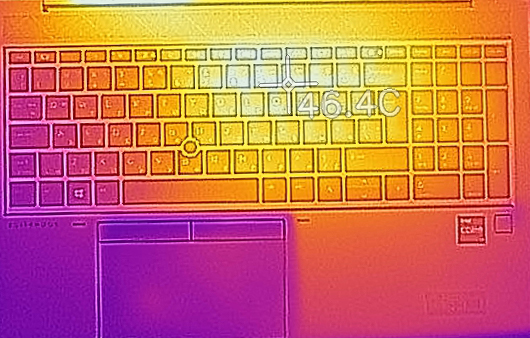
Verdict
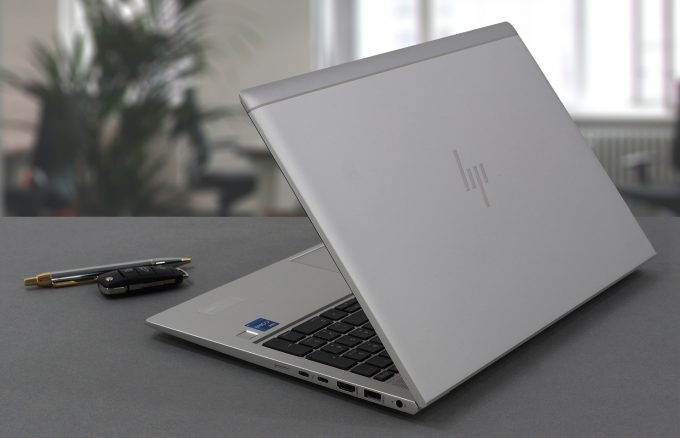 HP is setting up to be one of the lead business notebook manufacturers. However, in order to do so, it has to overcome the fierce competition in the face of Dell (with their Latitude series), and Lenovo (with the ThinkPads). Arguably, the latter offers one of the biggest portfolios. This ensures that all of the price gaps are filled, and you have the best ThinkPad for your price range.
HP is setting up to be one of the lead business notebook manufacturers. However, in order to do so, it has to overcome the fierce competition in the face of Dell (with their Latitude series), and Lenovo (with the ThinkPads). Arguably, the latter offers one of the biggest portfolios. This ensures that all of the price gaps are filled, and you have the best ThinkPad for your price range.
But we are not here to talk about Lenovo’s gap fillers. We are here to tell you if you should be even interested in the EliteBook 850 G8. And the answer is yes. All of the ease-of-life managing tools are on point. You also get supreme security and privacy features. And from a consumer standpoint – it comes with a great optional UHD display.
HP EliteBook 850 G8’s UHD IPS panel has comfortable viewing angles and a good contrast ratio. Thankfully, it doesn’t use PWM for brightness adjustment and covers 93% of the sRGB color gamut. Speaking of color, the default settings of the display don’t offer the best color accuracy. However, our Gaming and Web design profile really improve the situation. Thus, you can use it for color-sensitive work. On the other hand, our unit was not really uniform when it comes to luminance across the area of the screen.
You know, usually, the 4K panels drain laptop batteries pretty quickly. However, this is not the case here. We got about 10 hours and a half of Web browsing, and almost 8 hours and a half of video playback.
Add features like IR face recognition, fingerprint reader, Smart Card reader, LTE, and 5G support, and great upgradability, and you get a very commendable business laptop that will surely last you quite some time.
Should you decide to equip your employees (or yourself) with one, you have to keep in mind that it will require a good portion of your budget. And you are not getting the best performance on the market. Nevertheless, the latter is countered by super-low temperatures under extreme workloads.
You can check the prices and configurations in our Specs System: https://laptopmedia.com/series/hp-elitebook-850-g8/
Pros
- Doesn’t use PWM for brightness adjustment (AUO AUO9890)
- Good battery life
- Premium build quality
- Great input devices
- IR face recognition camera + 2x Thunderbolt 4 connectors
- 93% sRGB coverage and accurate colors with our Gaming and Web design profile (AUO AUO9890)
Cons
- No SD card slot
- Nonuniform luminance (AUO AUO9890)
- Not the best performance
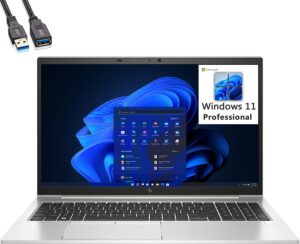
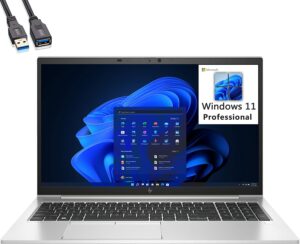
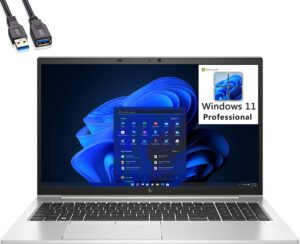
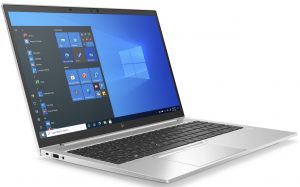
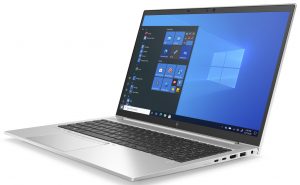
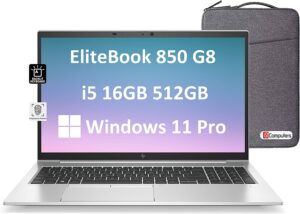
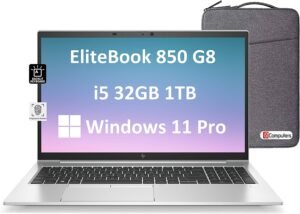
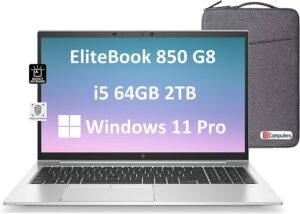
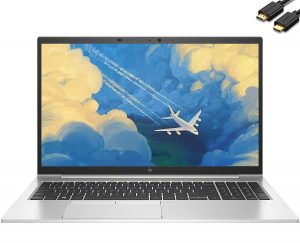
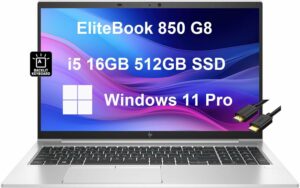
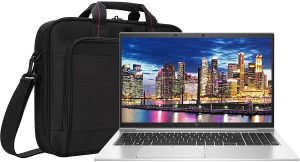
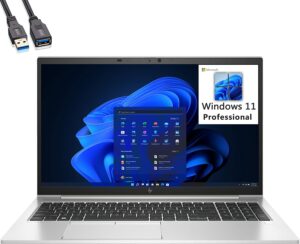

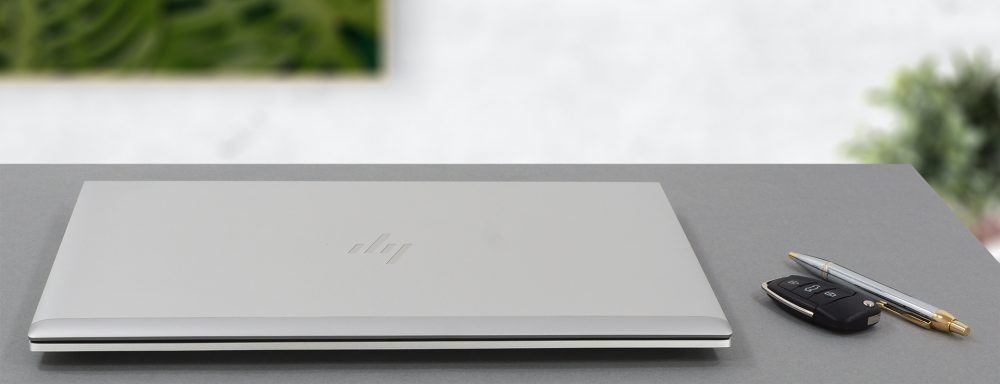
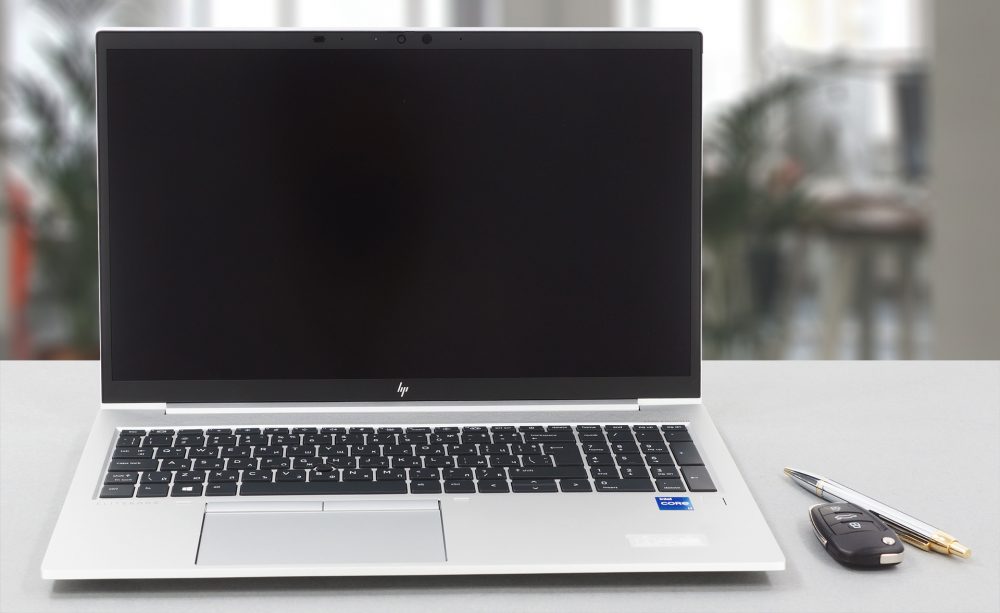
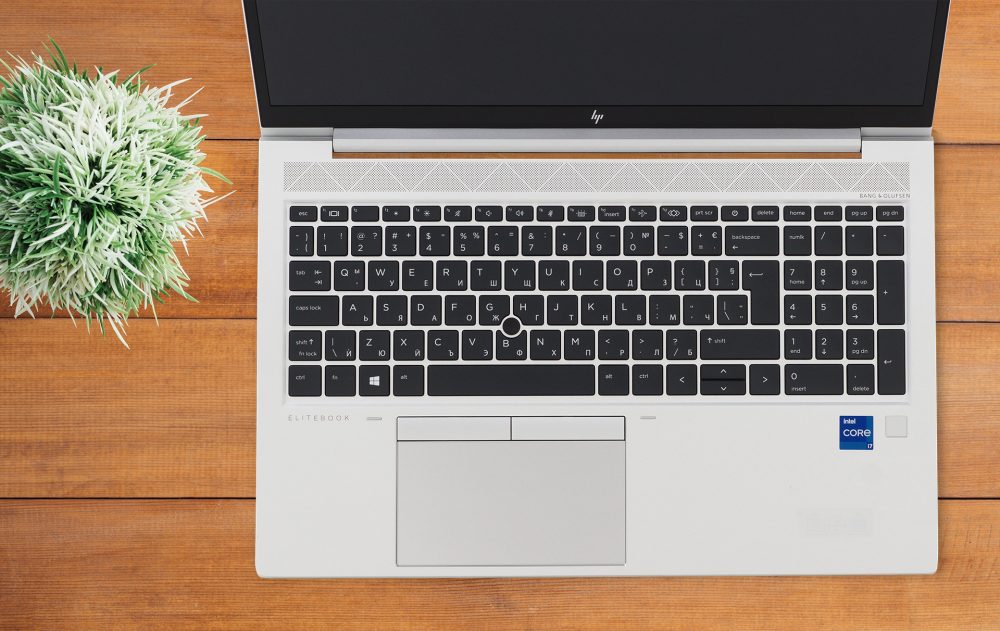
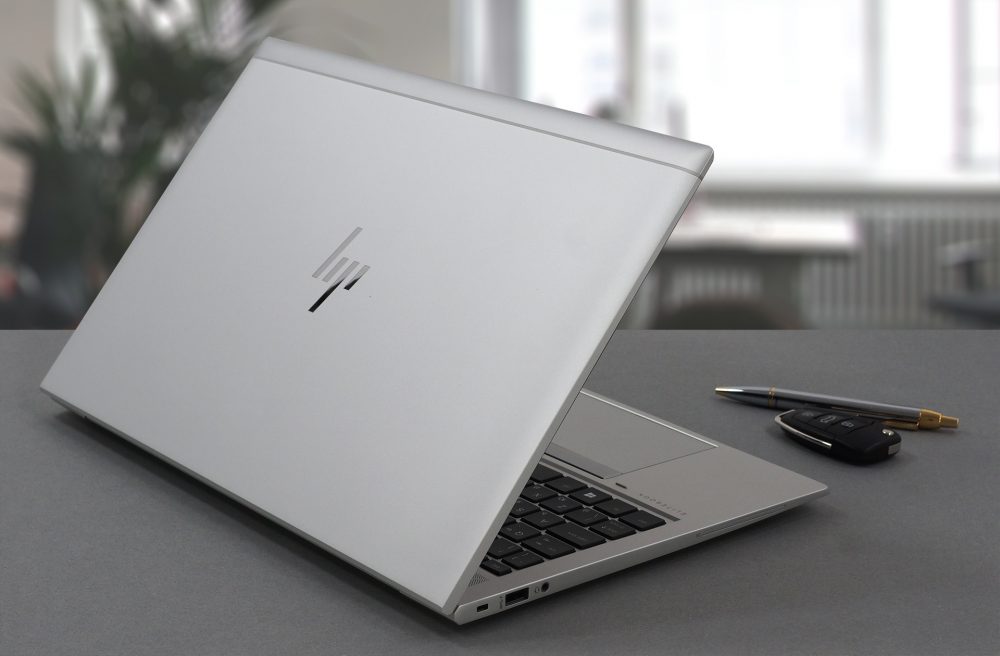
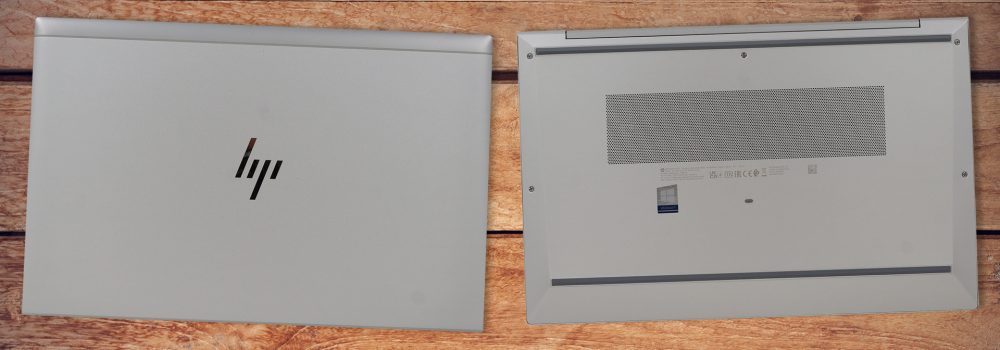


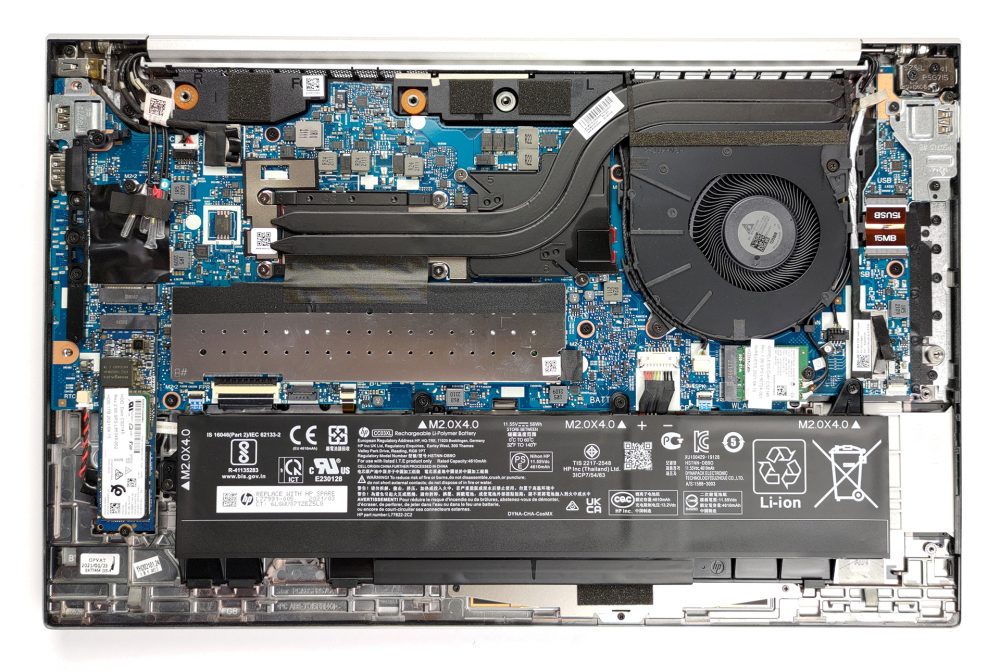

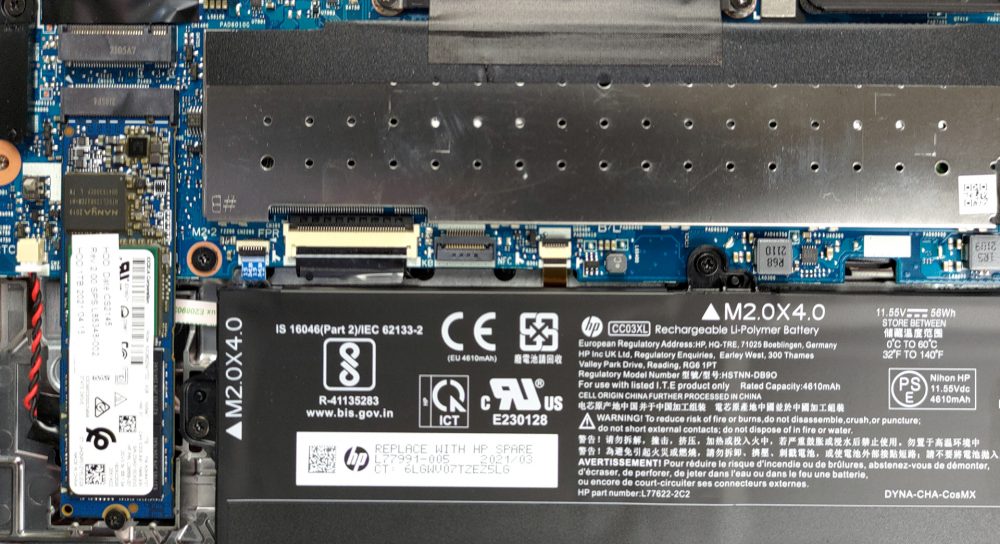
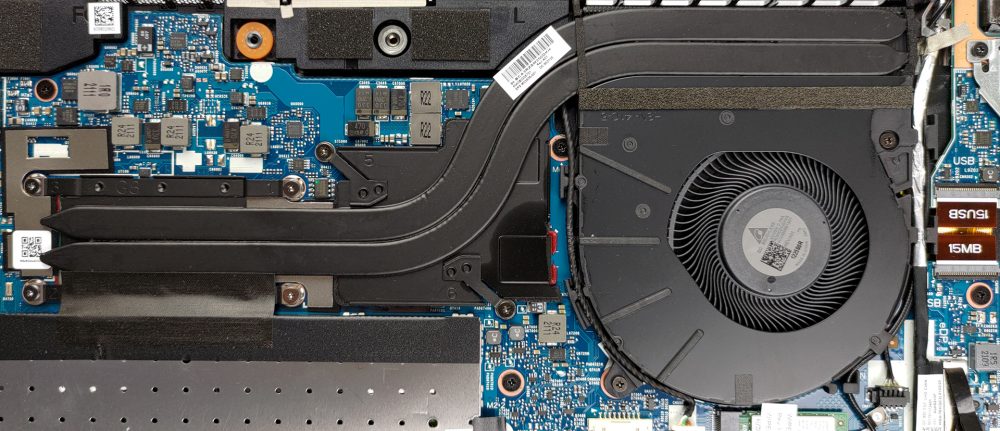
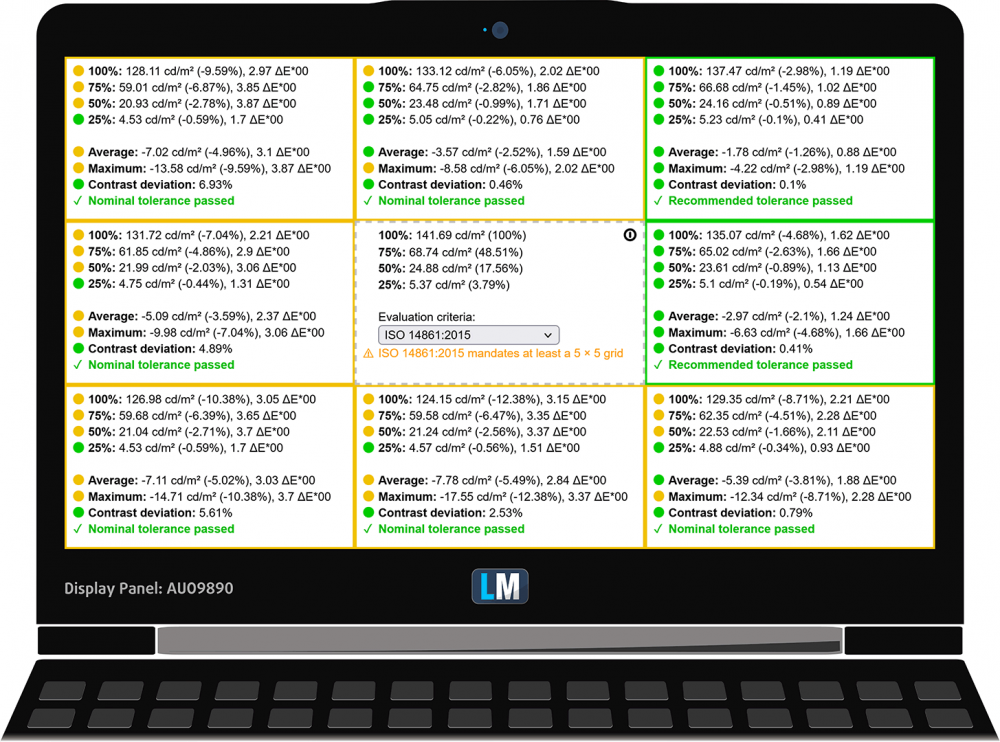
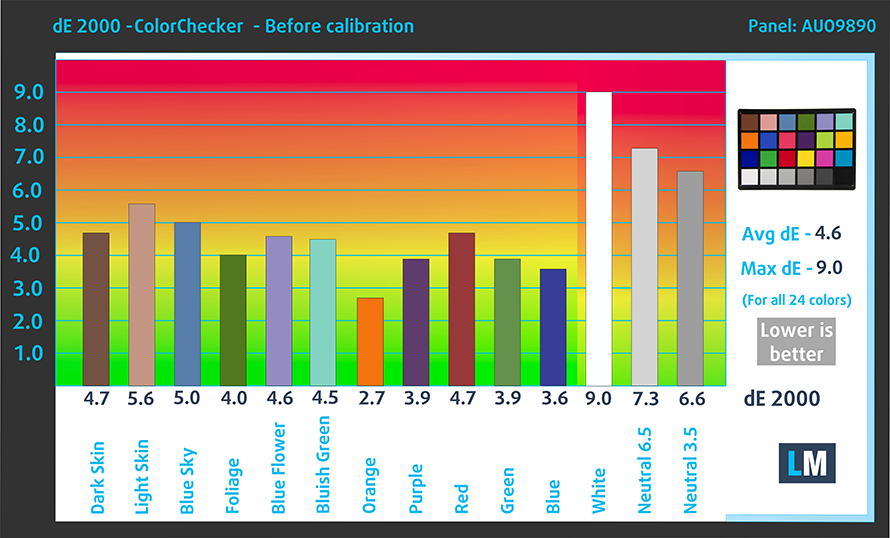
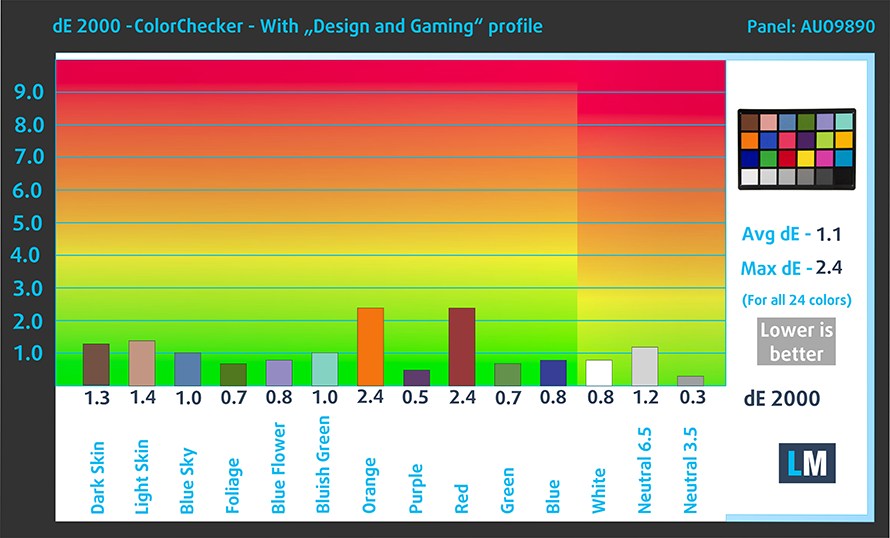

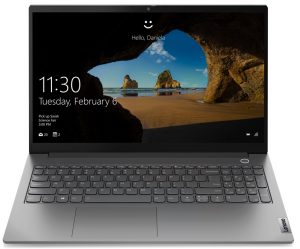
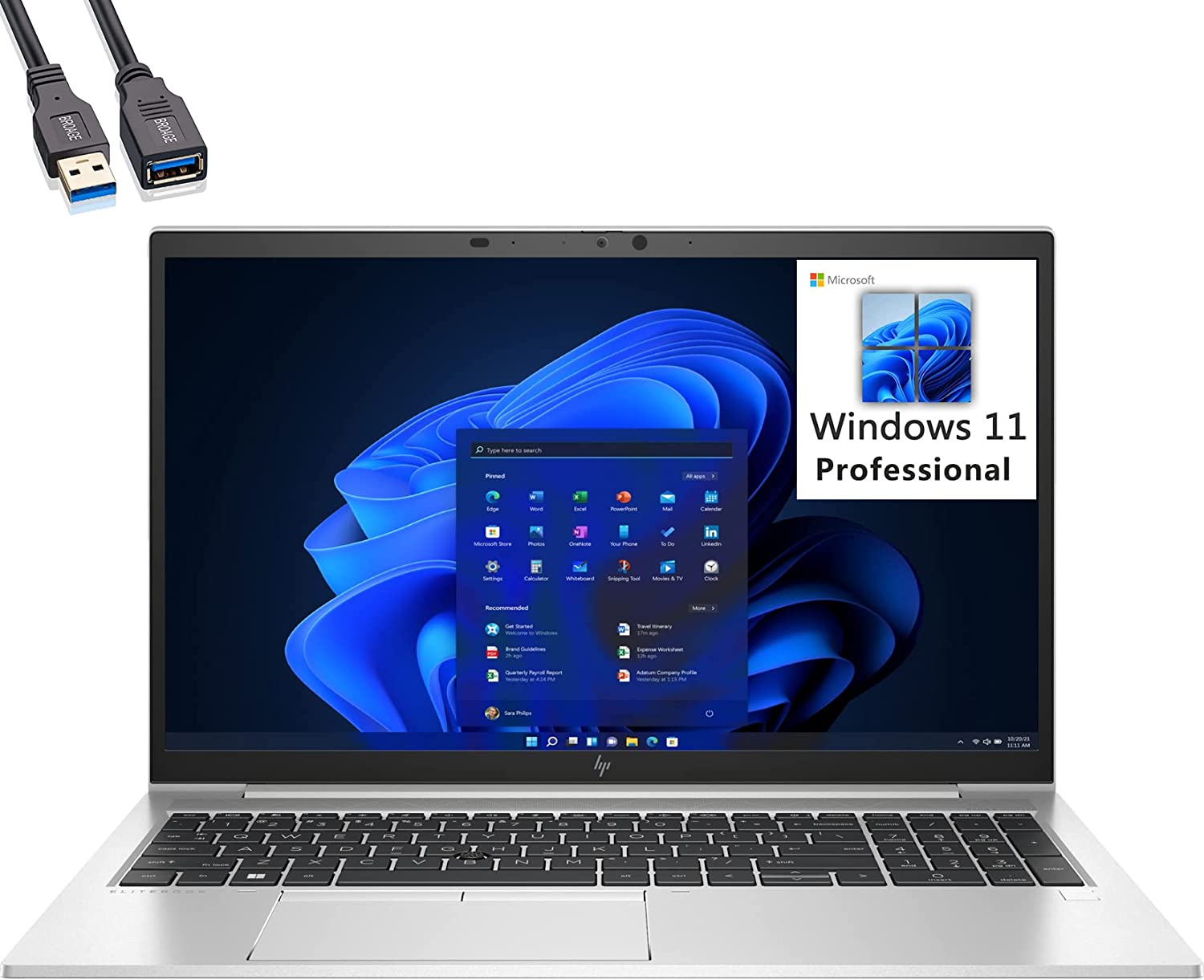

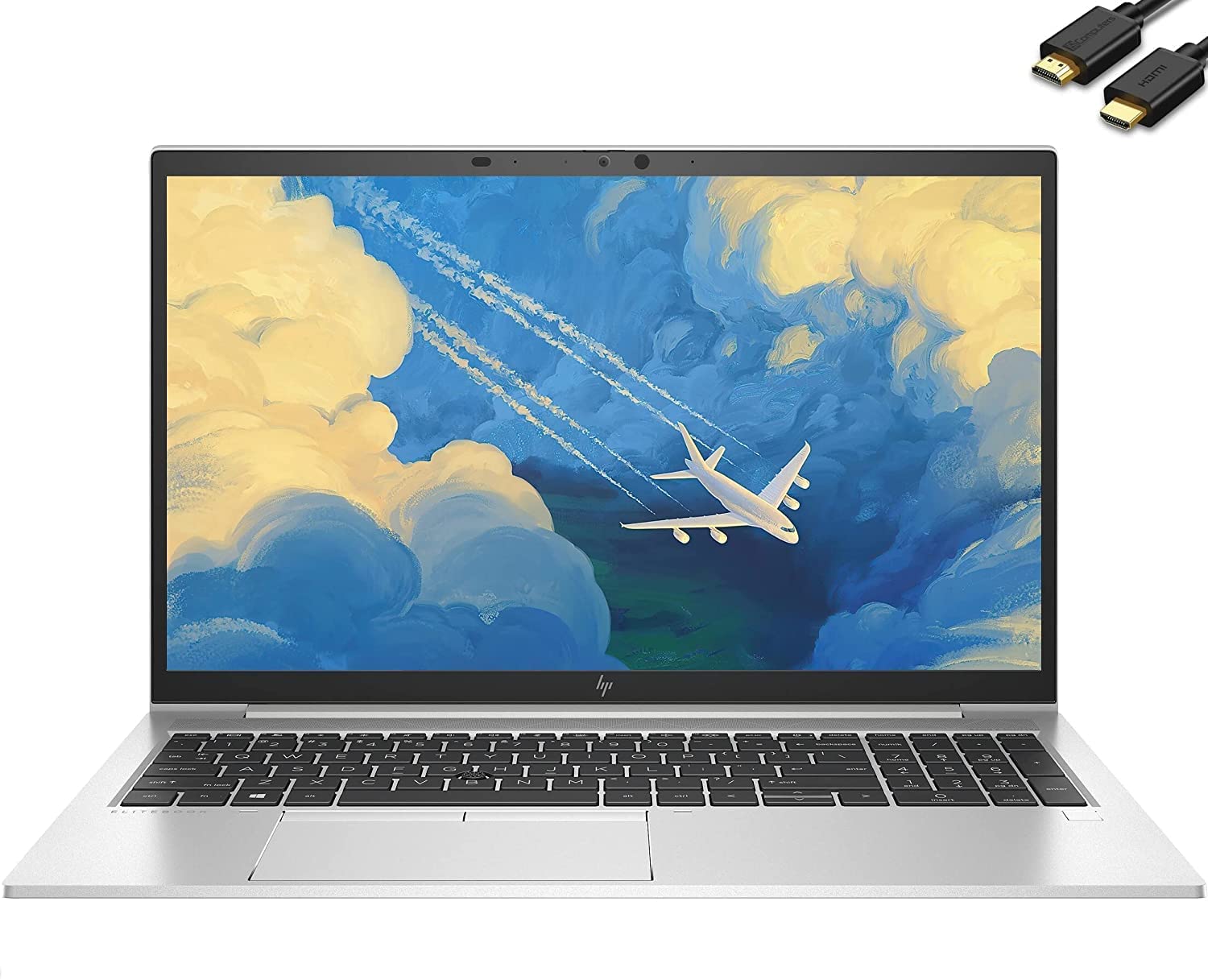
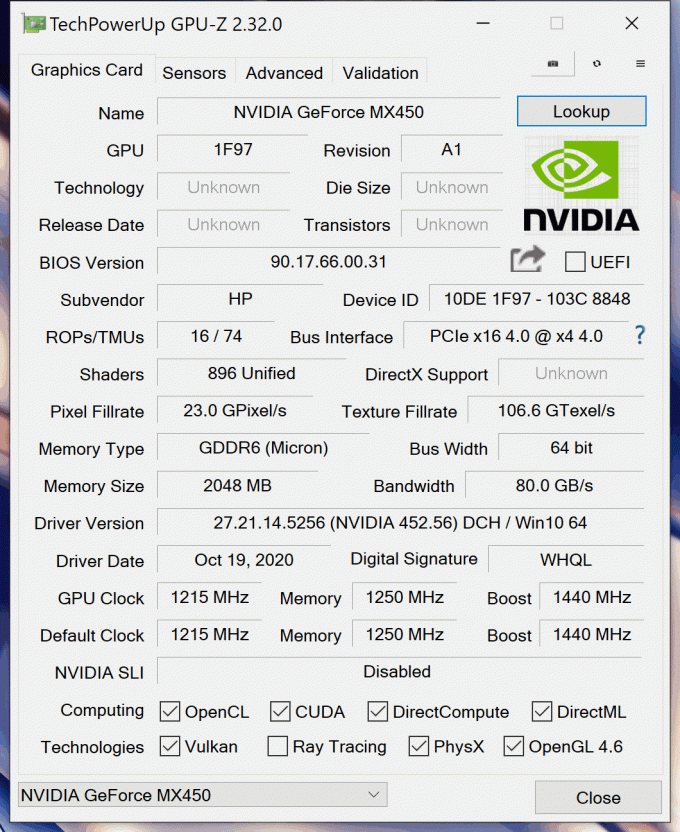







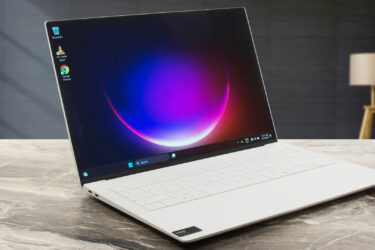
sorry, where you took drivers for sound. I have only Realtek drivers and HP sounds very bad